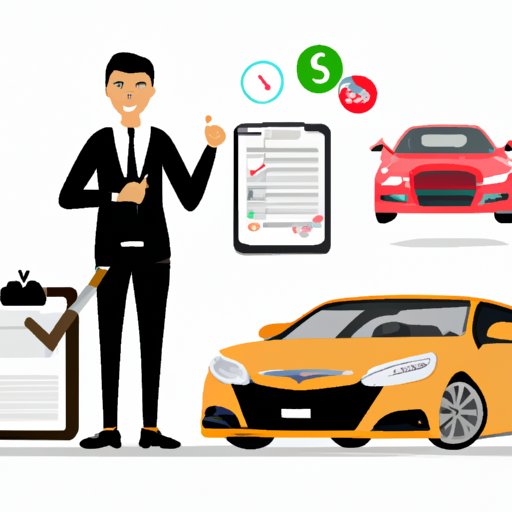
How Do Car Dealerships Make Money?
Car dealerships are businesses that sell new and used vehicles to consumers. However, buying a vehicle is not just a simple transaction between the buyer and the dealership. Dealerships use a variety of strategies to profit from the sale of each vehicle, and understanding how they make money can be helpful for car buyers to negotiate the best deal. In this article, we will explore the main ways car dealerships make money and how these strategies affect car prices and profits.
How Car Dealerships Make Money Off New and Used Car Sales
One of the primary ways car dealerships make money is through the sale of new vehicles. Most new cars are sold with a markup, which is the difference between the dealership’s cost and the price they charge the customer. This markup is typically around 5% to 10% of the vehicle’s invoice price (the price the dealership pays to the manufacturer). However, some dealerships may charge more or less depending on various factors such as demand, competition, and sales goals.
In contrast, used car profit margins can vary greatly depending on the source of the vehicle. Dealerships can purchase used cars through trade-ins, auction purchases, or directly from private sellers. Since they have different costs associated with each method, prices can also vary. Dealerships typically have higher profit margins with used cars compared to new since they can buy them at a lower cost than new cars and may not need to perform as much maintenance or repairs before selling them.
Financing is another way dealerships can increase their profits. Dealerships often partner with financial institutions to offer loans and leases to customers. They earn a commission for each loan or lease they facilitate, which can help offset other costs or losses they may incur. It is important for buyers to negotiate financing terms since the dealership can often mark up the interest rate to earn more profit.
Differences in Profit Margins Between New and Used Cars
As previously mentioned, used cars generally have higher profit margins than new cars. In addition to lower purchase costs, dealerships may also sell add-ons, such as warranties, accessories, or gap insurance, to increase their profit margin. These add-ons often come with a markup, and they can be more profitable than selling the car itself. While add-ons might not be necessary, they can provide peace of mind for a buyer who is purchasing a vehicle without a warranty.
Another way car dealerships make money is through servicing and repairs. They may offer maintenance packages or extended warranties to customers, also providing a source of additional income. Additionally, dealerships may earn a profit by performing repairs or maintenance on vehicles. Although this is typically a small margin, it can help generate business in the service department and maintain long-term customer relationships.
The Role of Manufacturer Incentives and Volume Bonuses in Dealership Profitability
Dealerships can earn additional profits through manufacturer incentives and volume bonuses. Manufacturers will often incentivize dealerships to sell certain models or reach a sales goal by offering cash bonuses or special discounts. These incentive programs can help dealerships earn additional profit on each sale, but they also come with risks. For example, if a dealership relies too heavily on manufacturer incentives, they may need to sell more vehicles to maintain profitability in the future, or they may face reduced bonuses if the manufacturer changes the program’s terms or ends the program entirely.
Advantages and Disadvantages of Managing a Dealership’s Finance and Insurance Department
Dealerships can earn additional profits by offering financing and insurance services in-house. These services can help streamline the buying process, and the dealership earns a commission on the sale of these services. However, offering these services comes with additional responsibilities and potential risks such as complying with regulations, liability for errors and omissions, and managing additional staff. Dealerships also need to be transparent with buyers and offer competitive rates to avoid alienating customers who may seek financing elsewhere.
The Types of Services Car Dealerships Offer and How They Contribute to Profits
Sales of new and used cars are not the only source of revenue for car dealerships. They also have a service department where they offer a range of services such as maintenance, repairs, and detailing. Offering these services helps dealerships stand out from the competition and can lead to customer loyalty. Revenue from the service department may also provide consistent sources of profitability, particularly in times of economic downturns when consumers may hold onto their vehicles longer than usual.
How Dealership Location and Reputation Affect Profitability
The location and reputation of a dealership can greatly affect its profitability. Dealerships that are located in areas with high demand for vehicles, such as near large cities, are usually more profitable than those located in rural areas. Positive dealership reputations can attract customers and lead to repeat business, while negative reputations can drive customers away. Dealerships with high customer service levels and a commitment to customer satisfaction often have loyal customers who will recommend them to others.
Conclusion
In conclusion, car dealerships use a variety of strategies to make money off the sale of new and used cars, financing, add-ons, and service offerings. Understanding these strategies can be useful for consumers when negotiating a vehicle purchase. Additionally, dealerships can benefit from location, reputation, and manufacturer incentives to increase profitability. By providing high-quality customer service and additional services, dealerships can maintain customer loyalty and improve their bottom line.




